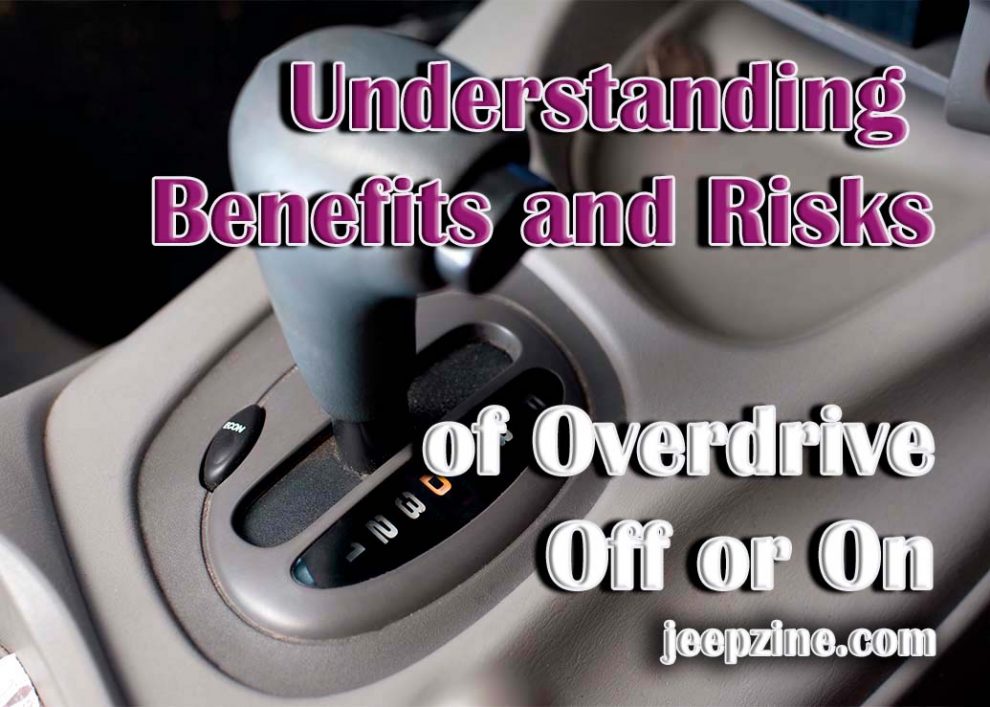Understanding when to use overdrive in your car can spark heated debates among drivers, mechanics, and auto engineers. Simply put, overdrive refers to an extra gear ratio in a vehicle’s transmission system, allowing the engine to operate at lower RPM while maintaining higher speeds, typically during highway driving. This not only improves fuel efficiency but also reduces engine wear, contributing to a smoother and quieter driving experience. Most modern vehicles come with automatic overdrive systems, although some cars offer manual overdrive options. While overdrive is generally recommended for situations requiring sustained speeds, it may be disengaged when increased power or acceleration is necessary. In essence, understanding overdrive and its impact on performance and fuel economy is crucial for getting the most out of your vehicle.
How Does Overdrive Affect Performance?

Fuel Economy with Overdrive On or Off
Overdrive significantly impacts a vehicle’s fuel economy. When engaged, it allows the engine to operate at lower RPM while maintaining higher speeds, leading to improved fuel efficiency due to reduced strain and lower frictional losses, especially during highway driving or constant speed cruising. Conversely, turning off overdrive increases RPM, thus escalating fuel consumption. Despite this, in certain scenarios like towing or navigating steep inclines, overdrive’s disengagement can offer superior power and torque delivery at the slight expense of fuel efficiency. Therefore, for optimal fuel economy under normal conditions, especially during long trips or at higher speeds, overdrive is generally recommended.
When to Use Overdrive Off and On?
There are a few scenarios in which it may be beneficial to turn off the overdrive function in your vehicle. For instance, if you drive on hilly terrain or tow a trailer, turning off the overdrive setting to gain more power and torque from the engine is typically recommended. This is because lower gears provide increased engine power and acceleration capabilities helpful in climbing steep inclines or maintaining speed when towing heavy loads. Turning off the overdrive can also help when driving on slippery surfaces like snow or ice. By turning off overdrive and engaging lower gears instead, drivers can reduce wheel spin by providing more traction while accelerating from a full stop.
In most cases, using overdrive on will provide better fuel efficiency and performance than leaving it off. As previously mentioned, engaging the overdrive gear ratio allows the engine to operate at lower RPM while maintaining higher speeds, resulting in improved fuel economy, especially during highway driving or other situations requiring constant speed maintenance for an extended period. Additionally, using automatic transmissions with modern vehicles can improve fuel economy by allowing the car to shift into higher gears at lower speeds, improving efficiency.
Pros and Cons of Using an Automatic Transmission
Increasingly prevalent in today’s vehicles, automatic transmissions offer both benefits. However, they also present certain challenges, particularly for those who value the level of control manual transmissions offer. Here are the detailed pros and cons:
Pros:
-
Ease of use: Automatic transmissions are generally more straightforward to operate than manual ones.
-
Improved fuel economy: Features like overdrive, torque converters, and variable valve timing allow the engine to operate optimally, leading to better fuel efficiency.
-
Enhanced control over speed: Automatic transmissions provide better speed regulation based on the situation.
Cons:
-
Potential for higher maintenance: Due to their complex mechanics, automatic transmissions might require more frequent maintenance.
-
Reduced control during certain maneuvers: Some drivers prefer manual transmissions for the greater control they offer during activities like accelerating from a stop or merging onto highways.
Conclusion
Overall, overdrive is a valuable feature that can improve fuel efficiency and performance in your vehicle while reducing strain on the engine during highway journeys or cruising at a constant speed. When used correctly, it can help you save money on fuel costs while providing greater overall performance and comfort during your drives. However, there may be certain situations where turning off the overdrive and using lower gears can provide better power and torque delivery, such as when towing a trailer or driving on slippery surfaces. Ultimately, it is important to understand the differences between overdrive off and on to get the most out of your vehicle’s performance and fuel efficiency.


Add Comment